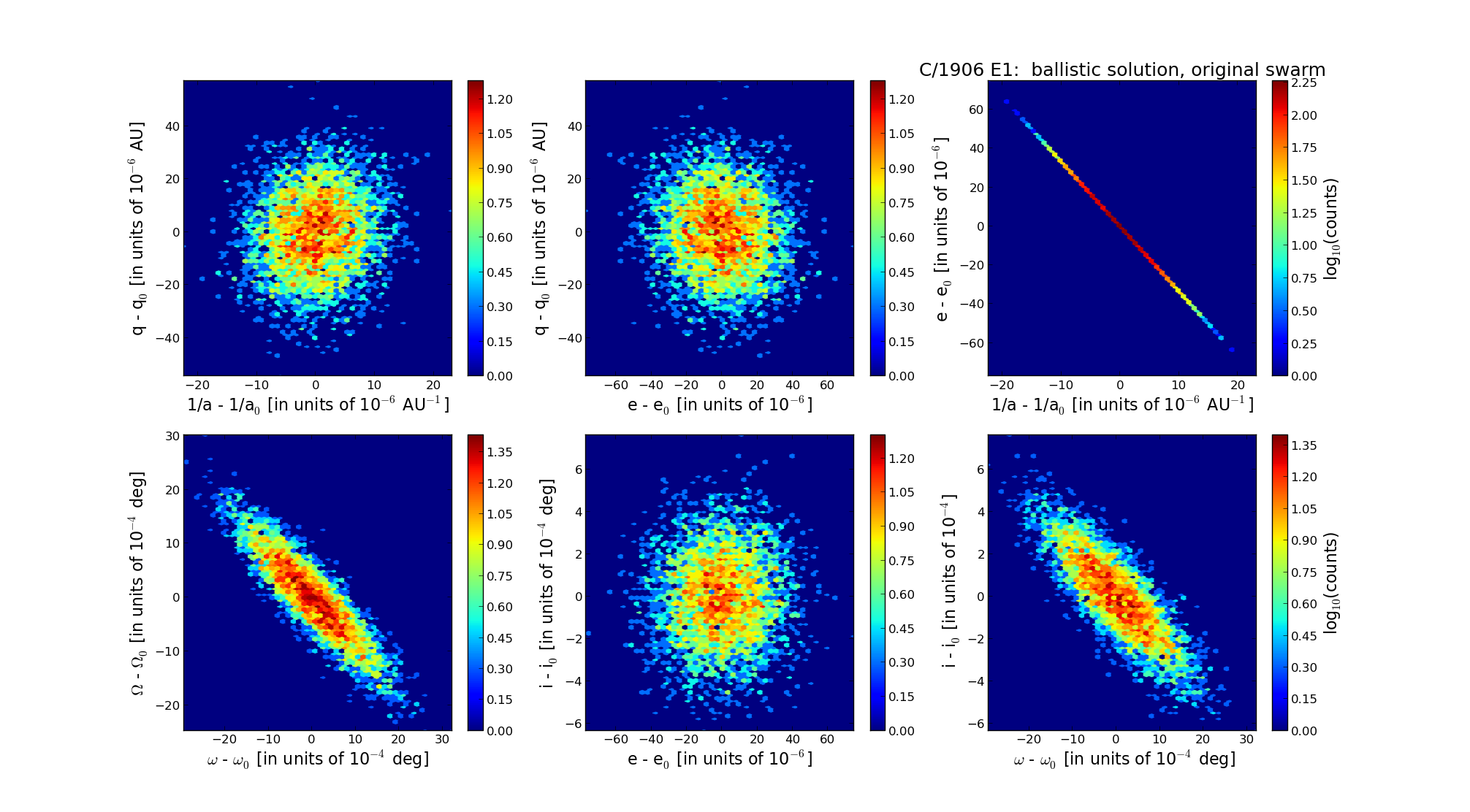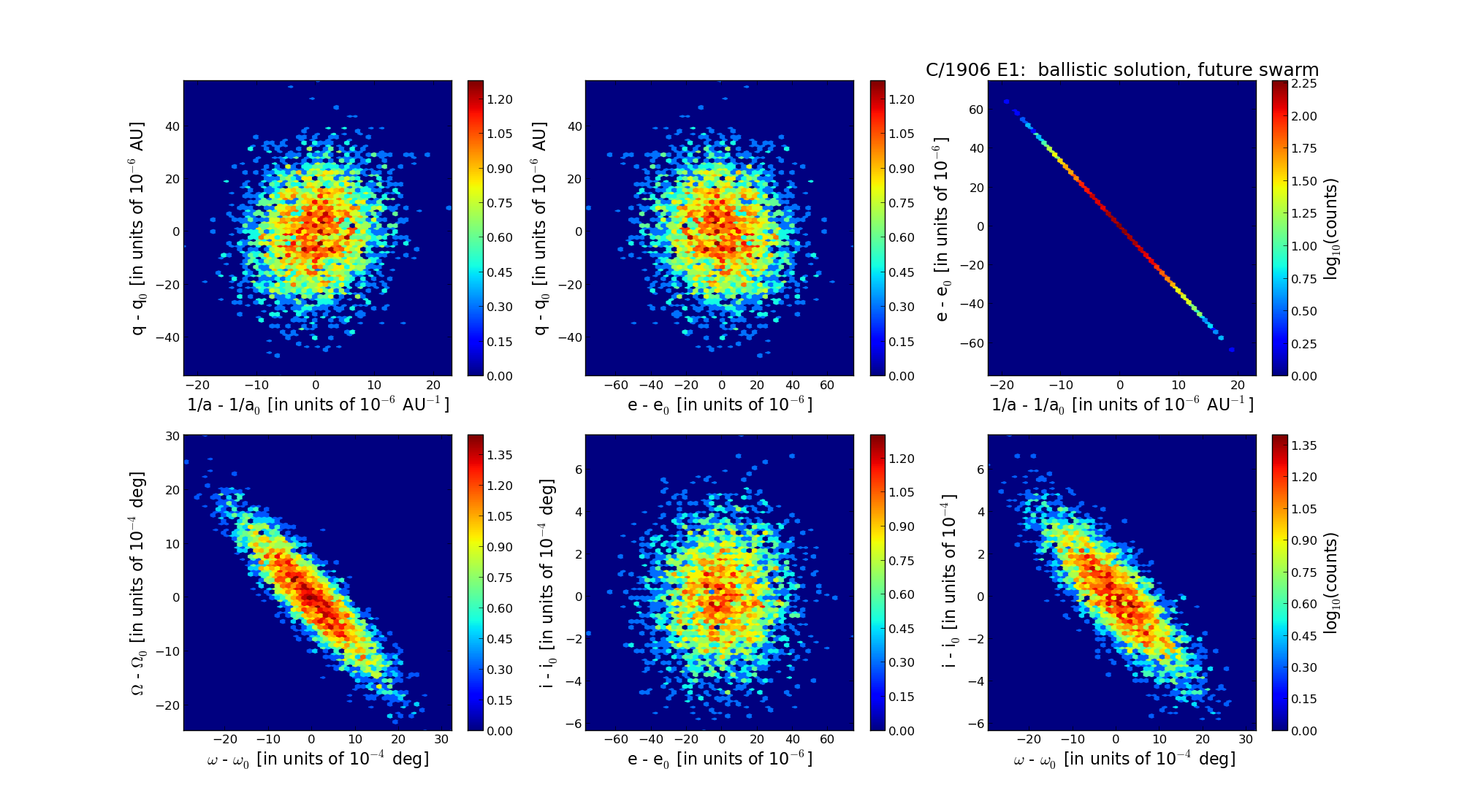| Solar System Dynamics & Planetology Group |
 |
C/1906 E1 Kopff |  |
| Solar System Dynamics & Planetology Group |
 |
C/1906 E1 Kopff |  |
| number of observations | 462 |
| number of residuals | 812 |
| data interval | 1904 Jan. 10 — 1907 July 4 |
| rms [arcsec] | 1.96 |
| orbit quality class | 1a |
| Epoch (TT) | 19051002.0 | = JD 2417120.5 |
| time of perihelion passage (TT) | 19051018.260509 | ± 0.001894 |
| perihelion distance | 3.33984993 | ± 0.00001427 |
| eccentricity | 1.00154602 | ± 0.00001830 |
| argument of perihelion [deg] | 158.599798 | ± 0.000814 |
| longitude of the ascending node [deg] | 343.621657 | ± 0.000729 |
| inclination [deg] | 4.282129 | ± 0.000190 |
| inverse semimajor axis [10-6 au-1] | -462.90 | ± 5.48 |

| Epoch (TT) | 16030518 | |
| time of perihelion passage (TT) | 19051017.833416 | ± 0.001867 |
| perihelion distance | 3.33691190 | ± 0.00001423 |
| eccentricity | 0.99994209 | ± 0.00001852 |
| argument of perihelion [deg] | 158.570127 | ± 0.000819 |
| longitude of the ascending node [deg] | 343.735716 | ± 0.000732 |
| inclination [deg] | 4.287970 | ± 0.000190 |
| inverse semimajor axis [10-6 au-1] | 17.35 | ± 5.55 |

| Epoch (TT) | 22020319 | |
| time of perihelion passage (TT) | 19051017.757182 | ± 0.001897 |
| perihelion distance | 3.34445809 | ± 0.00001428 |
| eccentricity | 1.00177097 | ± 0.00001853 |
| argument of perihelion [deg] | 158.629204 | ± 0.000820 |
| longitude of the ascending node [deg] | 343.663142 | ± 0.000733 |
| inclination [deg] | 4.280140 | ± 0.000190 |
| inverse semimajor axis [10-6 au-1] | -529.52 | ± 5.54 |